上海光语生物科技有限公司,提供亚历山大藻(GY-H52 Alexandrium sp.)(荧光性很强),藻种及相关培养技术,并提供60升-100升培养设备,有温度显示,pH显示,光照度显示,加热,水泵,气泵,自动调光LED灯源。欢迎来电咨询。
细胞球形,尺寸较小,直径15-29微米,细胞棕绿色,具鞘,包囊从球形到稍扁形,上面看为圆形(直径25-35),侧面观察为卵形(长28-35微米,宽20-30微米)。大多数细胞含有粒状物质和少量橘黄色物质。有腹孔,窄。
基本特征
亚历山大藻生长在热带、温带沿岸和河口海域。该种是地中海分布最广的PSP毒素种,也是引起东南亚发生PSP事件的两种主要生物之一(Vila et al., 2001; Lim et al., 2006)。该种集中在港口、河口和泻湖,与低盐度和富含营养的淡水输入区相关。培养试验表明,该种是广温盐性的(Grzebyk et al., 2003, Cannon 1996)。提高温度和增加光照,生长速率增加(Lim et al., 2006)。一段时间适应后,在12℃也可以达到较高的生长速度
生态影响(ECOSYSTEM)
亚历山大藻是一种能形成沿海藻华的微小腰鞭毛藻。最早在亚历山大港赤潮时被记载。该单细胞藻产生的高浓度毒素是造成全球许多地区人群麻痹性贝毒感染的主要原因。毒素能够影响生态系统中的其它生物,如哺乳动物、鸟类、鱼类和浮游动物。与相似种的塔玛亚历山大藻不同,微小亚历山大藻仅产生相对有限的PSP毒素(GTX1-GTX4)。少量毒素对浮游动物和鱼类有害,能够减少桡脚类生物繁殖。毒素在浮游动物、贝类和蟹类中具有蓄积性,人或其他哺乳动物使用后会引起麻痹性中毒。该毒素属于神经毒素,引起人肌肉瘫痪、神经症状,严重时会导致死亡(Hallegraeff, 1993; Van Dolah 2000)。藻华时由于担心PSP疾病爆发,关闭贝类养殖厂,带来经济损失。
Description
Alexandrium minutum Halim, 1960
Species Overview:
Alexandrium minutum is an armoured, marine, planktonic dinoflagellate. It is a widely distributed species associated with toxic PSP blooms in coastal regions.
Taxonomical Description:
Cells of A. minutum are small, nearly spherical to ellipsoidal, somewhat dorsoventrally flattened and occassionally longer than wide (Figs. 1-4). Cells are single with a characteristic ventral pore on the first apical plate, 1′ (Figs. 2-4,8,9). Thecal plates thin. Thecal surface ornamenation can vary from light to heavy reticulation (mostly confined to the hypotheca) with small scattered pores. Intercalary bands are present (Figs. 1-3). Large range in size in this species: between 15-30 µm in length and 13-24 µm in transdiameter width (Balech, 1989, Balech, 1995, Hallegraeff, 1991, Taylor et al., 1995, Steidinger and Tangen, 1996, Hwang et al., 1999).
Thecal Plate Description:
The plate formula for A. minutum is: Po, 4′, 6”, 6c, 10s, 5”’, 2””. The epitheca is larger than the hypotheca. The apical pore complex (APC) is oval to broadly triangular and pointed posteriorly (Fig. 3). The apical pore plate (Po) is large, narrow and oval with a wide foramen (Figs. 3,9). The Po can be either in direct contact with the first apical plate (1′) (Figs. 3,9a) or indirectly connected via a thin suture (thread-like process) (Fig. 9b). This connection can be obscured by plate growth overlap by plates 2′ and 4′. A characteristic ventral pore is located on the slender and rhomboidal 1′ plate (Figs. 2-4, 8,9). The distinctive sixth precingular plate (6”) is long and narrow (Fig. 1) (Balech, 1989, Balech, 1995, Hallegraeff, 1991, Taylor et al., 1995, Steidinger and Tangen, 1996, Hwang et al., 1999).
The epitheca is hemielliptical to conical with convex sides (Figs. 1,2,4). The apex is broadly rounded. The short hypotheca is hemielliptical with a convex to flat antapex (Figs. 1,2,4). The deeply excavated cingulum is displaced in a descending fashion one time its width with thickened margins (Figs. 1,2,4). The sulcus is shallow with narrow lists (Figs. 1,2) (Balech, 1989, Balech, 1995, Hallegraeff, 1991, Taylor et al., 1995, Steidinger and Tangen, 1996, Hwang et al., 1999).
Morphology and Structure:
A. minutum is a photosynthetic species with an elliptical nucleus (Balech, 1989, Balech, 1995).
Reproduction:
A. minutum reproduces asexually by binary fission. This species also has a sexual cycle that produces a characteristic resting cyst (Figs. 6,7) (Bolch et al., 1991).
Ecology:
A. minutum is a planktonic dinoflagellate species associated with toxic PSP events in coastal regions around the world. This species also produces dense (reddish-brown) red tides (Hallegraeff, 1991). A red tide of this species reported from Taiwan had cell densities as high as 2.5 X 10^7 cells/L (Hwang et al., 1999). Another red tide of A. minutum reported from South Australia revealed cell levels of 4.8 X 10^8 cells/L (Cannon, 1990).
This species produces a clear resting cyst as part of its life cycle. Cysts vary from hemispherical to circular in shape: cyst circular in apical view (24-29 µm in diameter) (Fig. 6); kidney-shaped in lateral view (15-19 µm long) (Fig. 7). The cyst wall is covered with mucilage (Bolch et al., 1991).
Toxicity:
Alexandrium minutum is a strong producer of PSP gonyautoxins: GTX1, GTX2, GTX3 and GTX4 (Oshima et al., 1989). These toxins can affect humans, other mammals, birds and possibly fish (Hallegraeff et al., 1988, Hallegraeff, 1991). This species is responsible for PSP events in Taiwan (Hwang et al., 1999), South Australia (Hallegraeff et al., 1988, Cannon, 1990), France (Nezan et al., 1989) and New Zealand (Chang et al., 1995).
Habitat and Locality:
Alexandrium minutum is widely distributed species found in many coastal areas of the world. Populations have been recorded from Alexandria Harbor, Egypt (Halim, 1960), Italy (Montresor et al., 1990), northern Adriatic waters (Mediterranean Sea) (Honsell, 1993), Turkey (Koray and Buyukisik, 1988), Spain and Portugal (as A. ibericum) (Balech, 1985b), France (Nezan et al., 1989), South Australia (Hallegraeff et al., 1988), and the east coast of the United States (Steidinger and Tangen, 1996).
Classification
Kingdom Protoctista
Phylum Dinoflagellata
Subphylum Pyrrhophyta
Class Dinophyceae
Order Gonyaulacales
Family Goniodomaceae
Genus Alexandrium
Species Alexandrium minutum
产品形式
- 试管固体培养基藻种(可以快递)
- 液体藻种(100ml-5L包装)
- 大容量藻液(5L以上,货运)


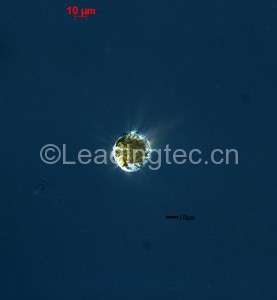
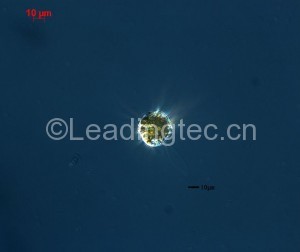
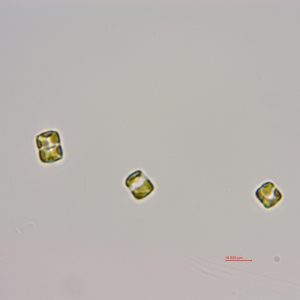
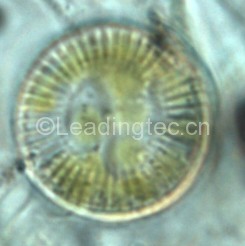
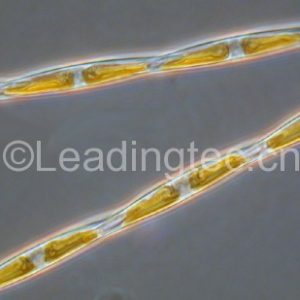
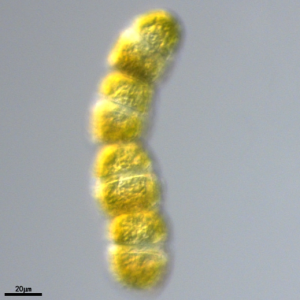
评价
目前还没有评价